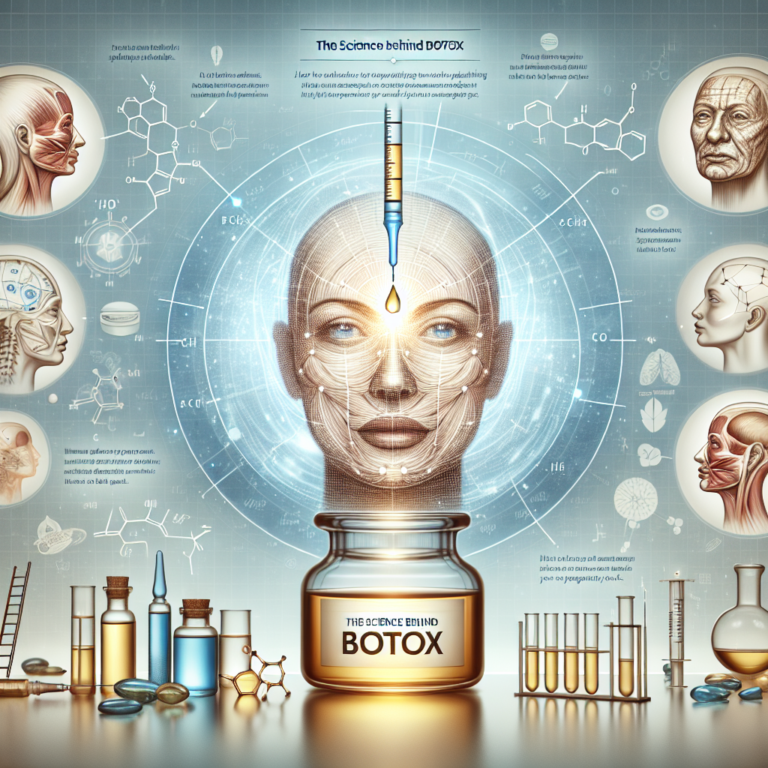The Science Behind Botox: How It Works to Rejuvenate Your Look
In recent years, Botox has surged in popularity as a go-to solution for combating the signs of aging. This remarkable substance has not only garnered attention in the cosmetic industry but has also sparked curiosity among those looking to rejuvenate their appearance. Understanding the science behind Botox can illuminate how it works, its benefits, and the mechanisms that allow it to create a more youthful look.
What Is Botox?
Botox is a brand name for botulinum toxin, a potent neurotoxin produced by the bacterium Clostridium botulinum. Despite its sinister-sounding origins, when used in controlled doses, Botox has become a trusted tool in both cosmetic and medical practices. The FDA first approved Botox for aesthetic use in 2002, and since then, it has been employed to smooth out wrinkles, treat excessive sweating, and even alleviate migraines.
Mechanism of Action
The primary mechanism of Botox is its ability to block nerve signals to specific muscles. When Botox is injected into the targeted muscles, it disrupts the release of acetylcholine, a neurotransmitter responsible for muscle contraction. As a result, the affected muscles become temporarily paralyzed, leading to a reduction in muscle activity that causes wrinkles.
For instance, consider the common frown lines between the eyebrows, known as the glabella. These dynamic wrinkles form due to repeated muscle contractions over time. When Botox is injected into these muscles, it effectively limits movement, allowing the skin to relax and smooth out the overlying lines.
Treatment Areas
Botox is most commonly used to treat areas that display dynamic wrinkles, including:
- Forehead Lines: Horizontal lines that develop from raising the eyebrows.
- Crow’s Feet: Lines that form at the corners of the eyes due to smiling and squinting.
- Frown Lines: Vertical lines between the eyebrows that appear with furrowing or scowling.
- Bunny Lines: Small wrinkles that appear on the sides of the nose.
- Lip Lines: Fine lines that can form above and below the lips.
In addition to cosmetic applications, Botox is also widely used for therapeutic purposes. Its ability to relax muscles is beneficial in treating conditions such as chronic migraines, excessive sweating (hyperhidrosis), and muscle spasms.
The Results
One of the most appealing aspects of Botox is the instantaneous nature of its results. While some improvements can be seen within a few hours, the full effects generally manifest within two weeks and can last for three to six months, depending on the individual and the treatment area.
As the effects gradually wear off, muscle activity returns, and wrinkles may reappear, making regular treatments necessary for maintaining the desired results.
Safety and Side Effects
Botox is considered safe when administered by a qualified and experienced practitioner. However, like any medical procedure, it carries potential risks and side effects. Common side effects may include mild swelling, bruising, or headache. Rarely, patients may experience more severe complications, such as drooping eyelids or difficulty in swallowing. The importance of selecting licensed and skilled professionals cannot be understated, as proper technique significantly reduces these risks.
Conclusion
The science behind Botox reveals a fascinating interplay between neurobiology and aesthetics. By temporarily immobilizing specific facial muscles, Botox provides a simple yet effective solution for those seeking to diminish the visible signs of aging. As research and technology continue to advance, the possibilities for Botox’s applications may expand even further, ensuring that it remains a cornerstone of both cosmetic and medical treatments for years to come.
For individuals looking to rejuvenate their appearance while understanding the treatment’s scientific underpinnings, Botox represents not just a beauty trend but a sophisticated blend of science and artistry.


